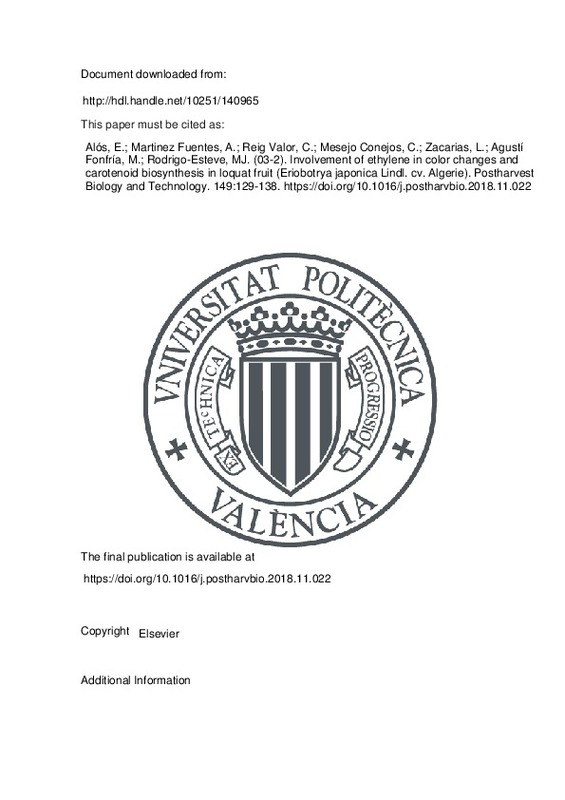JavaScript is disabled for your browser. Some features of this site may not work without it.
Buscar en RiuNet
Listar
Mi cuenta
Estadísticas
Ayuda RiuNet
Admin. UPV
Involvement of ethylene in color changes and carotenoid biosynthesis in loquat fruit (Eriobotrya japonica Lindl. cv. Algerie)
Mostrar el registro completo del ítem
Alós, E.; Martinez Fuentes, A.; Reig Valor, C.; Mesejo Conejos, C.; Zacarias, L.; Agustí Fonfría, M.; Rodrigo-Esteve, MJ. (2019). Involvement of ethylene in color changes and carotenoid biosynthesis in loquat fruit (Eriobotrya japonica Lindl. cv. Algerie). Postharvest Biology and Technology. 149:129-138. https://doi.org/10.1016/j.postharvbio.2018.11.022
Por favor, use este identificador para citar o enlazar este ítem: http://hdl.handle.net/10251/140965
Ficheros en el ítem
Metadatos del ítem
| Título: | Involvement of ethylene in color changes and carotenoid biosynthesis in loquat fruit (Eriobotrya japonica Lindl. cv. Algerie) | |
| Autor: | Alós, Enriqueta Zacarias, L. Rodrigo-Esteve, Mª Jesús | |
| Entidad UPV: |
|
|
| Fecha difusión: |
|
|
| Resumen: |
[EN] In loquat (Eriobotrya japonica Lindl cv. Algerie) fruit, despite the non-climacteric ripening behaviour, evidence suggest that ethylene may participate in the regulation of several ripening- and postharvest-related ...[+]
|
|
| Palabras clave: |
|
|
| Derechos de uso: | Reserva de todos los derechos | |
| Fuente: |
|
|
| DOI: |
|
|
| Editorial: |
|
|
| Versión del editor: | https://doi.org/10.1016/j.postharvbio.2018.11.022 | |
| Código del Proyecto: |
|
|
| Agradecimientos: |
Dr. E. Alos was recipient a post-doctoral contract JAE-Doc-CSIC (Fondo Social Europeo). The financial support of the research grants FP7-PEOPLE-2011-CIG-2011-303652 (Marie Curie Actions, European Union), AGL-2015-70218 ...[+]
|
|
| Tipo: |
|







![[Cerrado]](/themes/UPV/images/candado.png)


